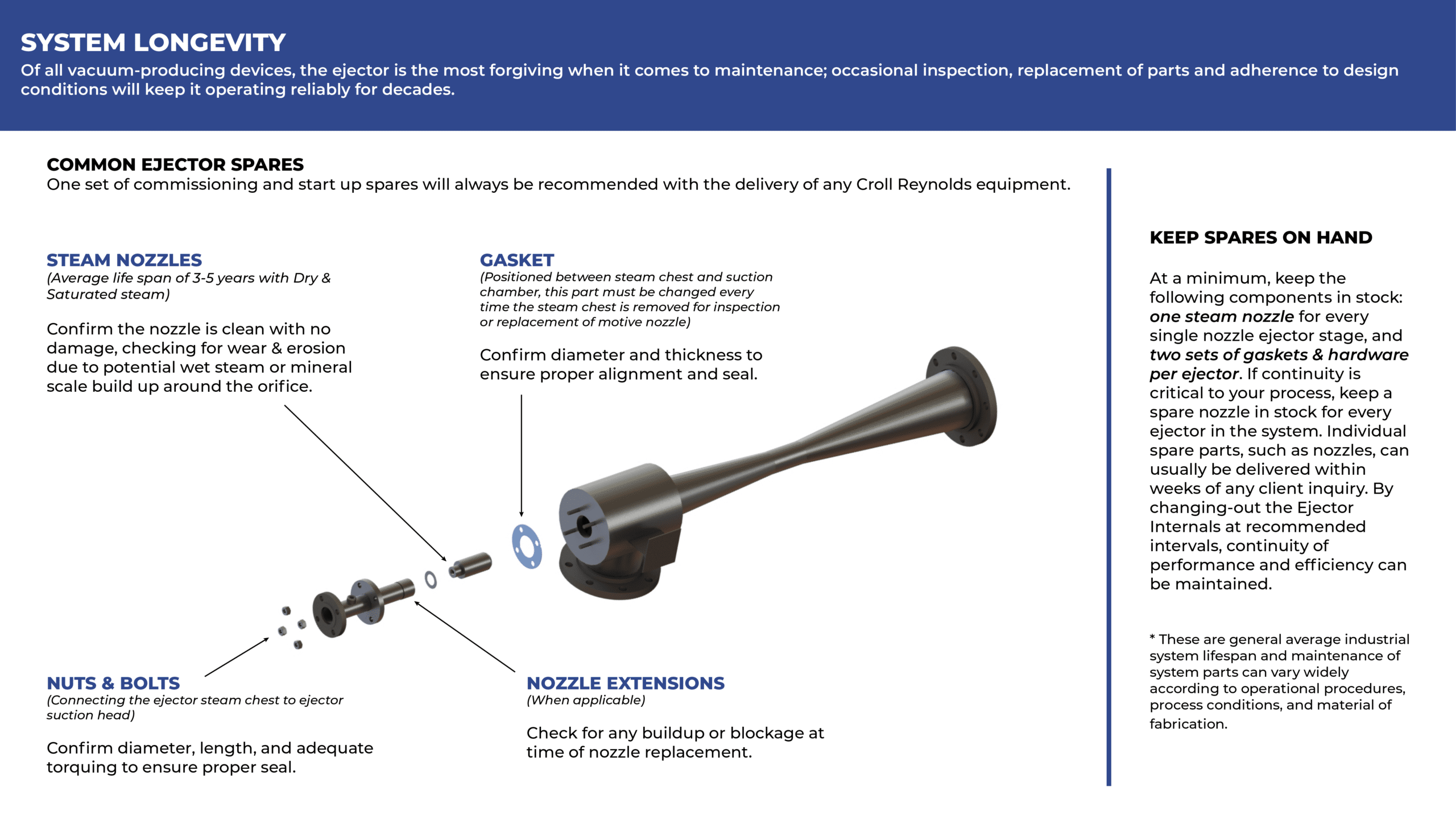Food and Beverage
Food and Beverage
Vacuum technology is used in Food and Beverage applications to support the production and preservation of products through processes of sterilization, food core chilling, batch fermentation, and much more. Our Process equipment enables the handling of raw ingredients in a manner that maximizes nutritional value, extends shelf-life, and develops the unique flavor profile of your favorite consumables. Industrial vacuum treatment provides for consistent quality and food safety and across the lifespan of goods, from harvest
Pilot Unit Determines Design Parameters of Steam-Jet Vacuum Equipment for Production Plants
Designing Parameters for the Efficient Recovery of Fatty Acids & Oils Entrained in Steam Pilot Unit Determines Design Parameters of Steam-Jet Vacuum Equipment for Production Plants: The efficient recovery of fatty acids and oils entrained in the deodorizing steam has the economic advantages of minimizing product loss and pollution in condenser water. To determine design and operating parameters for a fullscale production unit, a pilot unit was set up as a means of establishing flow rates, pressure, vacuum, temperature, load, type of mist eliminator and other factors that would operate most efficiently on a plant production scale.
The equipment in the pilot plant includes a 24 in. diameter Scrub-Vactor; a 12 sq ft, type 22-A ARM plate type heat exchanger; a 112 sq ft vapor-in-tube surface condenser with condensate tank; a 11,4 in. gear pump with steam turbine drive; a two-stage, noncondensing Evactor.
The equipment was assembled as shown in the accompanying diagrams. The Scrub-Vactor is a combination of a jet-venturi fume scrubber and parallel flow condenser, which uses the product itself as the scrubbing medium.
Measured amounts of air, dry superheated steam and fatty acids are admitted to the Scrub-Vactor at a temperature of approximately 300 F, and a pressure of approximately 2 in. of Hg absolute. The inlet material is joined by a stream of distillate released at about 135 F and a pressure of 100 psig. The distillate is sprayed into the receiving area at just under atomization conditions. The inlet material and the distillate mixture is drawn into the venturi where they are thoroughly mixed and it is cooled to approximately 150 F. The distillate and the heavy oils which are condensed from the inlet mixture are returned to the charge at the bottom of the vessel. The charge is kept at a constant level by bleeding off the excess. The temperature is kept constant by circulation through the plate heat exchanger and returned to the high press spray nozzle.
The high temperature, high pressure distillate motivates the flow and scrubs and condenses the vapor mixture being fed in. The purified water vapor remains in the vapor state because of the relatively high temperature, and passes upward through a mist eliminator and then into the surface condenser from which it is discharged. An extremely small amount of oil-laden vapor will pass through the scrubber in accordance with Dalton’s Law of Additive Pressures.
Most runs of the pilot plant operation showed the efficiency resulted in a better than 95% recovery of the fatty acid oils. Samplings of the oils in the condensate showed a negligible contamination.
Weighted condensate samples were taken by inserting a tube into the condenser and drawing off a suitable amount of the fluid. Xylene was added to the sample to absorb 11ny fatty oils that may have been present. The xylene and its absorbed oil (if any) floated to the surface and the sample was decanted leaving only the xylene mixture. Heat was then applied to drive off the xylene mixture. The amount of residual fatty oil remaining was formulated with the amount present in the inlet mixture and equated to a figure representing an efficiency percentage: Efficiency= 1-(% oil residue/% oil inlet) = 95%
The residue figure was also checked by measuring the increase in distillate over a period of time and subtracting it from the amount of inlet oil.
During the test runs the heat transfer ratios for the plate cooler were worked out empirically for the various oils tested. These figures have proved valid when extrapolated for process equipment.
From the test logs and observations, it is apparent that production plant design and operating parameters were established and that the efficiency of the pilot tests could be simulated in full scale plant production.
Results also show that a Scrub-Vactor recovery unit can be placed in line in a continuous process equipment scheme without interrupting the functioning of the other chemical processing equipment as there is a minimal loss of pressure in this set-up.
Analysis and calculation of the test data results prove that the test data are practical as criteria for full scale equipment selection and operation. Also, use of the pilot unit assures an exceptionally high percentage of waterfree product recovery and low contaminant condenser water.
Case Studies
Distillation
Sterilization
Featured Products
product crystallization, evaporation and more
pumping, heating, and transport of liquids and more
product crystallization, evaporation and more
batch or continuous cooling and air conditioning processes
heat recovery from multi-effect evaporators and more
heating fluids in tanks and pipelines for various processes
For your vacuum system requirements, contact our US headquarters in Parsippany or our representative offices in your area.
